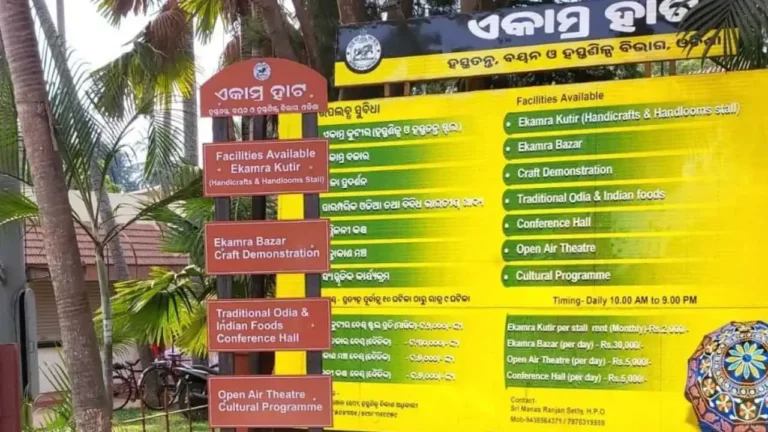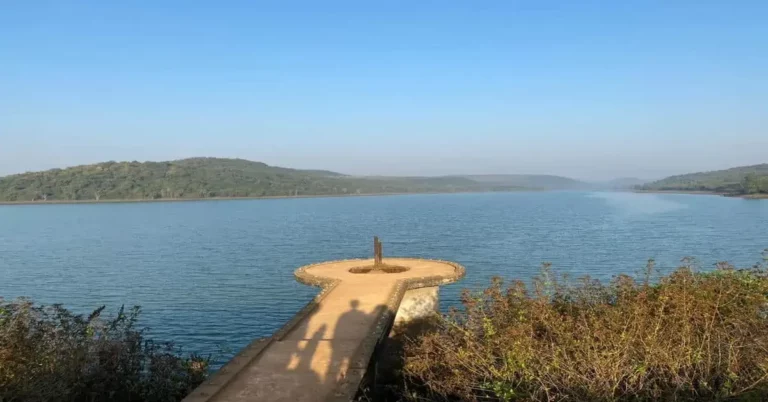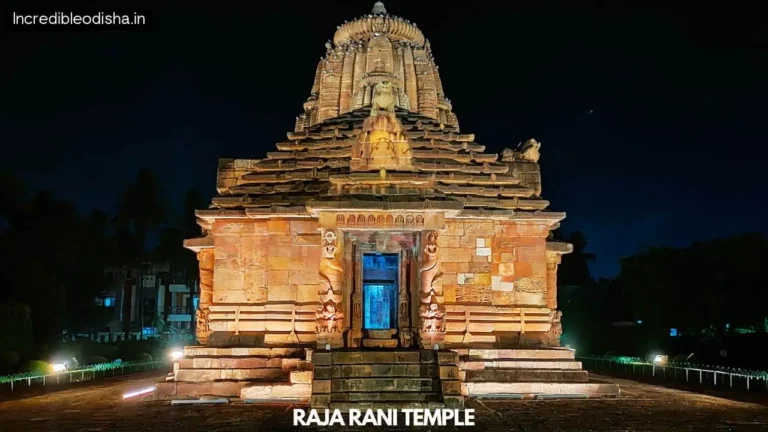Hirakud Dam Sambalpur – Facts, Gates, Gandhi Minar and Nehru Minar
Nestled in the heart of Odisha, India, lies a true gem of modern engineering – the Hirakud Dam. This magnificent structure spans across the mighty Mahanadi River, providing vital irrigation and hydroelectric power to the people of the region. But that’s not all that makes this dam so special. With its combination of man-made engineering and natural beauty, the Hirakud Dam is truly a sight to behold. The length of the Hirakud dam is 4.8 kilometres and it has 64 sluice gates and 34 crest gates.
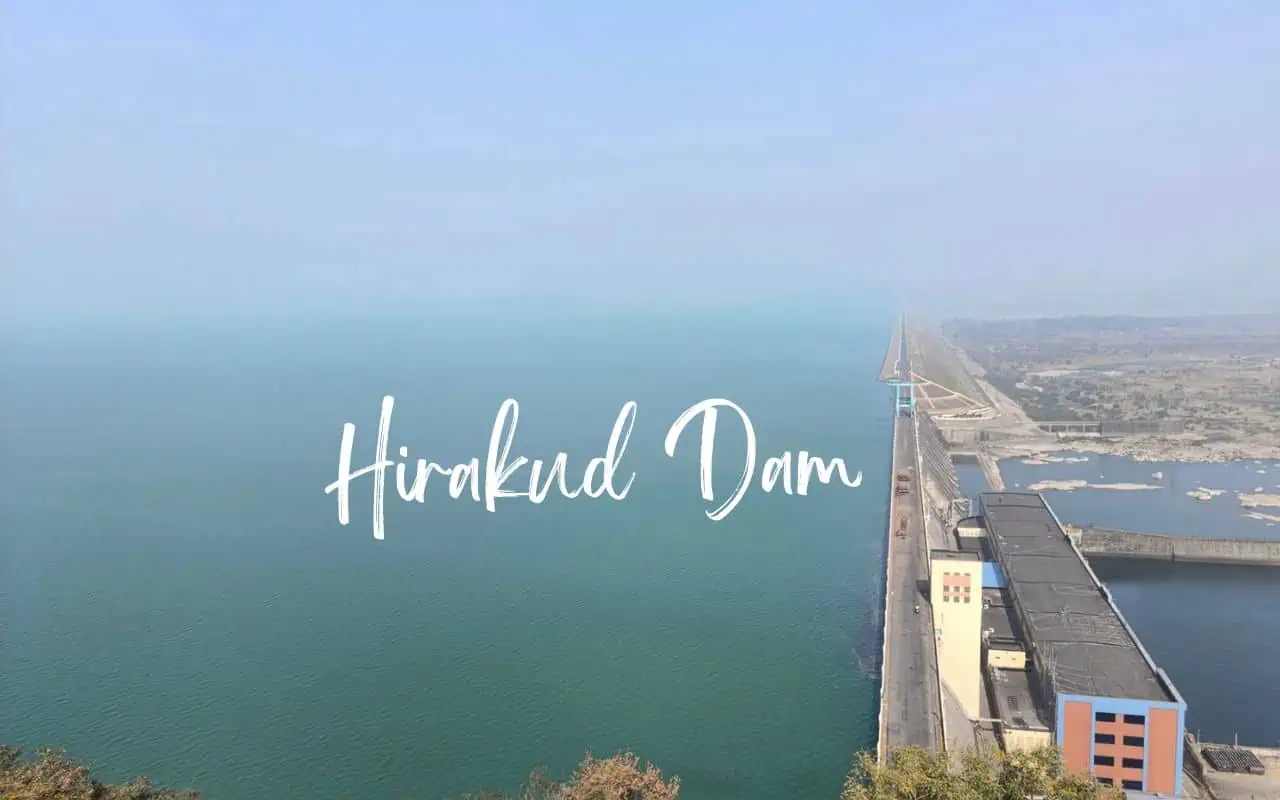
When it comes to sheer size, the Hirakud Dam is no slouch. In fact, it boasts one of the longest earthen dams in the world, stretching over 4.8 km. But the dam’s engineers didn’t just aim for size – they also aimed for durability and efficiency. By using an innovative method called “roller compacted concrete,” they were able to build a dam that can withstand the test of time and keep the water in check.
While the dam’s primary purpose is to provide irrigation water to the parched regions of Odisha, it also generates a significant amount of hydroelectric power. With a capacity of over 260 MW, the dam is a major contributor to the state’s power supply, helping to light up homes and power businesses across the region.
But the Hirakud Dam isn’t just about engineering and functionality. It’s also about preserving the beauty and diversity of nature. The reservoir created by the dam covers a massive 630 km² and is home to a variety of plant and animal species, including migratory birds that flock to the area each year. The dam authorities have gone to great lengths to conserve the natural habitat, with bird-watching towers, nature trails, and eco-friendly lodges that allow visitors to get up close and personal with the beauty of the dam and its surroundings.
It’s not every day that you come across a structure that truly has it all. The Hirakud Dam is a perfect blend of man-made engineering and natural beauty, and it’s a testament to the importance of balancing economic development with environmental conservation.
Whether you’re an engineer, a nature lover, or simply someone who appreciates the beauty of the world around us, the Hirakud Dam is a must-see. So if you’re ever in the neighbourhood, be sure to take a trip to this magnificent piece of modern engineering, and see for yourself why it’s such a special place.
Consider reading: 20 Must Visit Best Tourist Places in Odisha
11 Facts About Hirakud Dam
Here are some interesting facts about the Hirakud Dam:
- Location: The Hirakud Dam is located in the Indian state of Odisha, on the Mahanadi River.
- Construction: The dam was built between 1946 and 1957 and is one of the largest dams in India.
- Type of Dam: The dam is a composite structure consisting of an earthen dam, a masonry dam, and a series of spillway channels.
- Length: The earthen dam is one of the longest in the world, stretching over 4.8 km.
- Purpose: The main purpose of the Hirakud Dam is to provide irrigation water to the dry regions of Odisha, but it also serves as a major source of hydroelectric power.
- Power Generation: The dam has the capacity to generate over 260 MW of power, which is distributed to various parts of the state.
- Wildlife Habitat: The reservoir created by the dam covers an area of over 630 km² and is home to a variety of plant and animal species, including several species of migratory birds.
- Environmental Conservation: The dam has been designed to minimize its impact on the surrounding environment and has features to prevent soil erosion, siltation, and other environmental problems.
- Nature Reserve: The dam serves as a key wildlife habitat and nature reserve, and the authorities have taken steps to conserve the natural habitat around the dam.
- Tourist Destination: The Hirakud Dam is a popular tourist destination, attracting visitors who come to admire its engineering, learn about its environmental conservation efforts, or simply enjoy the beauty of the surrounding nature reserve.
- Spillway Gates: The Hirakud Dam has 64 sluice gates and 34 crest gates which help to regulate the flow of water in the dam. The spillway gates are an important component of the dam’s safety and flood control system, and they are used to discharge excess water during heavy rainfall or other conditions.
History of Hirakud Dam
The history of the Hirakud Dam dates back to 1937 when efforts to start the project were underway. The devastating floods of that year prompted the proposal for a thorough investigation of the storage reservoirs in the Mahanadi basin, with the aim of addressing the flooding problems in the Mahanadi delta.
In 1945, Dr B.R. Ambedkar, who was then the Member of Labour in the Government of India, took the decision to maximize the potential of the Mahanadi River, and the project was taken up by the Central Waterways Navigation and Irrigation Commission.
The foundation stone of the Hirakud Dam was laid on March 15, 1946, by the Governor of Odisha, Sir Hawthorne Lewis. In June 1947, the project report was submitted to the Government of India. On April 12, 1948, Pandit Jawaharlal Nehru poured the first concrete, and on January 13, 1957, he officially inaugurated the dam. The project became fully operational in 1966, with supplies for irrigation and power generation starting gradually.
The Gandhi Minar at Hirakud Dam
The Gandhi Minar in Hirakud Dam is a tribute to the legacy of Mahatma Gandhi. It is located near Sambalpur in the state of Odisha and is a popular tourist destination for both Odisha and Jharkhand visitors.
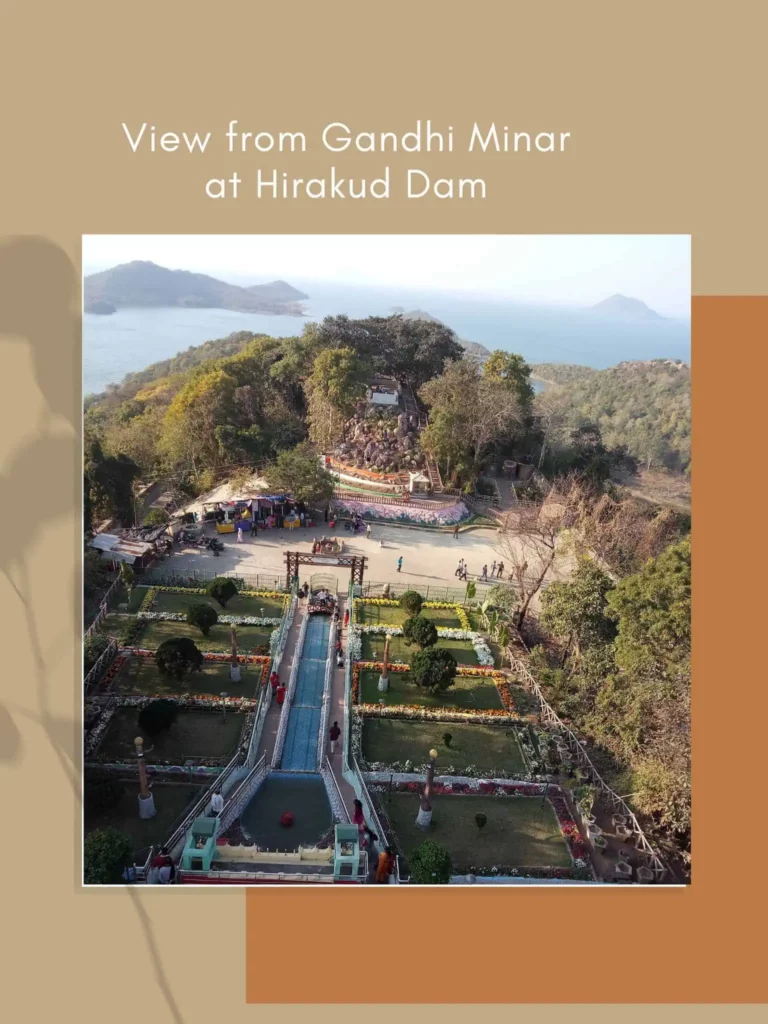
The government of Odisha has provided various amenities such as a children’s park, family park, flower gardens, and a ropeway to the Gandhi Minar for local travellers. There is also a paid road accessible by both four-wheelers and two-wheelers to reach the Gandhi Minar.
The best time to visit the Gandhi Minar is during the rainy season, or especially in the winter, to enjoy panoramic views of the Hirakud Dam surrounded by hills. Visitors can either take a bike or a four-wheeler or take the ropeway from the hill bottom. At the top of the Minar, there is an automatic cabin provided by the authorities for tourists to have a 360-degree view of the dam and its surroundings.
Gandhi Minar ropeway cost: Rs 60 per person
Gandhi Minar by own vehicle: Rs 10
How to Reach Hirakud Dam?
Hirakud Dam is located near Sambalpur in Odisha, India. The dam is well connected by road and rail.
By Rail: The nearest major railway station is Sambalpur Railway Station, which is well-connected to major cities across India. Buses are also available from Sambalpur to the dam. Private taxis and cabs can also be hired to reach the dam.
By Air: The nearest airport to Hirakud Dam is at Jharsuguda which is 50 km away from the dam.
By Road: National Highway 6 connecting Mumbai to Kolkata, passes through Sambalpur. Sambalpur is connected to Bhubaneswar through National Highway 42.
Hirakud Dam Distance from Major Locations
Hirakud Dam Distance from Major locations:
| Place | Distance |
| Jawaharlal Nehru Minar | 8 KM |
| Sambalpur | 16 KM |
| Jharsuguda Airport | 62 KM |
| Bhubaneswar | 286 KM |
| Bilaspur | 228 KM |
| Raipur | 272 KM |
Places to Visit near Hirakud Dam
Looking for exciting places to visit near Hirakud Dam? Look no further! With its picturesque beauty and serene surroundings, Hirakud Dam is a popular tourist destination in Odisha. But there’s more to explore in the vicinity. Here are some must-visit places near Hirakud Dam that you shouldn’t miss:
- Samaleswari Temple: Located just 20 km away from Hirakud Dam, Samaleswari Temple is a famous Hindu shrine dedicated to Goddess Samaleswari. The temple’s architectural beauty and peaceful ambience make it a must-visit spot for spiritual seekers and history enthusiasts.
- Debrigarh Wildlife Sanctuary: If you’re a nature lover, Debrigarh Wildlife Sanctuary is the perfect place for you. Just 40 km away from Hirakud Dam, this sanctuary is home to a wide range of flora and fauna. You can go on a jungle safari and spot tigers, leopards, deer, and many more.
- Huma Temple: Located around 45 km away from Hirakud Dam, Huma Temple is a unique shrine dedicated to Lord Shiva. What makes this temple special is that it is built on a leaning rock, and devotees believe that the rock never falls.
- Ghanteswari Temple: Another famous temple near Hirakud Dam is the Ghanteswari Temple. Located around 30 km away, this temple is dedicated to Goddess Ghanteswari and is known for its beautiful architecture and serene surroundings.
- Chiplima: Chiplima is a small town located around 24 km away from Hirakud Dam. This town is famous for its scenic beauty and is a great spot for picnics and day trips. The town is also known for its hydroelectric power plant, which generates electricity from the Hirakud Dam water.
So, what are you waiting for? Plan your trip to Hirakud Dam and explore these amazing places nearby.
FAQs on Hirakud Dam
Where is Hirakud Dam located?
The Hirakud Dam is located near Sambalpur in the state of Odisha, India.
When was Hirakud Dam built?
The construction of the Hirakud Dam started in 1945 and was completed in 1957. It was inaugurated by Pandit Jawaharlal Nehru on January 13, 1957.
What is the purpose of the Hirakud Dam?
The Hirakud Dam was built to control the frequent floods in the Mahanadi delta, provide irrigation facilities to the surrounding regions, and generate hydroelectric power.
How many gates does Hirakud Dam have?
The Hirakud Dam has 64 sluice gates and 34 crest gates which help to regulate the flow of water in the dam.
What is the height of Hirakud Dam?
The height of Hirakud Dam is 630 feet (192 meters) from the foundation.
Is there a tourist area near Hirakud Dam?
Yes, the Gandhi Minar in Hirakud Dam is a popular tourist spot that offers panoramic views of the dam and its surroundings. There are various amenities such as a children’s park, family park, flower gardens, and a ropeway available for visitors.
Can I stay overnight near Hirakud Dam?
Yes, there are several hotels and resorts available in Sambalpur, the nearest city to Hirakud Dam, where visitors can stay overnight.
Is there any entry fee to visit Hirakud Dam?
There is no entry fee to visit Hirakud Dam, but there may be a charge for certain amenities such as the ropeway to the Gandhi Minar.


